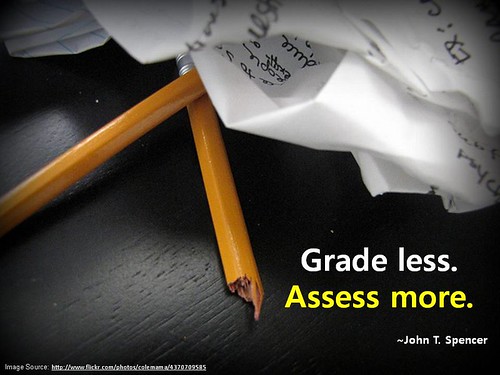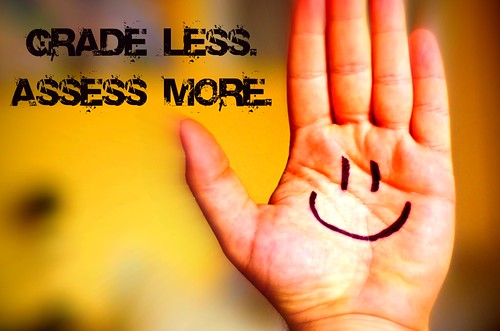If you are in education and you have not yet seen, watched, heard or read any of Prof Dylan Williams work then get over to the SSAT National Conference website and watch his keynote. Following the conference my RSS feed for ‘Great quotes about Learning and Change’ dished up
So I sent the link to Professor Dylan Williams.
Thanks. I like the quote, but I’m not sure that the picture is right!
#Fail. As Prof Dylan Williams presented a Samuel Beckett quote
Ever tried. Ever failed. No matter. Try again. Fail again. Fail better.
I am trying again with two efforts, one showing our use of Poll Everywhere with staff and the other a sourced images, ‘hands up,’ customised and shared through Picnik, shown below. Of course, I tried to find a mini whiteboard or traffic light card / cups response system image, but as I my have to fail better – I may have to photograph one of my own lessons.
The reason for this addition effort comes from Year 10 English Class. Late into the lesson I asked a question about the changing tone in ‘The Charge of the Light Brigade.’ I asked, what I thought was a fair, open question, with no wrong answer, 6 possible answers, (with the most correct answer being 4 or 5) . Safe for everyone to answer.
How many tones or voices can you hear in the poem?
Only a few hands went up, and as many eyes went down. So, I asked one of the ‘eyes down boys’ for his thoughts. He replied with a shrug and a grunt and we waited. I thought about moving on (and then coming back) but instead took a different approach, I went in search of whole class assessment.
I asked the class to stand up, that alone caused a few to look around uncomfortably, and then asked,
How many of you can hear just one voice, one tone, in the poem? Sit down if ‘one’ is your answer.
This was clearly not the answer (having asked the class to discuss the changing tone in the cover lessons set whilst at the conference). Still, 6-8 students promptly sat down, including my shoulder shrugging, grunting non-participant. However, committed by the physical act of sitting down, I asked him
Now that you have made your decision, what led you to that conclusion?
It was not his shallow answer that is of particular interest here, but the fact that 4-5 students promptly stood back up. By the end of our brief discussion, we were all standing again. On so it went on….
How many of you can hear just x voices, x different tones, in the poem? Sit down if ‘x’ is your answer.
Students were far more attentive to one another’s choices with the knowledge that they may be asked to explain their answer if they sat down. I had in my mind that I would challenge firmly all student that answer 1 or 2 tones, but accept accept 3, 4, 5, or 6 tones. Clearly poetry is about interpretation. When we finally got to 4 tones, seated and standing students debated. Clearly their colours where identifiable by their stance. At this point, I notice that the non-participant had sat down.
What is your view now? I asked.
He borrowed from the responses of the other students, adding little of his own thought, but at least he was informed. So the lesson went on. At the end, one student was still standing (for effect or not?). Puzzled, I asked her if she thought that there was in fact more than 6 tones? She replied,
I don’t really get the question Sir.
Effect? The class laughed and I smiled, suggesting we speak about it at the end of the lesson if she was unsure. She did not wait at the end of the lesson and I got to reflect on a more ‘holistic’ feedback method.
More questioning idea can be found here at QUIZICAL.



Pingback: Proving Pupil Progress with Claire Gadsby | Kristian Still's Blog
Pingback: Better inspection for all | KristianStill/Blog